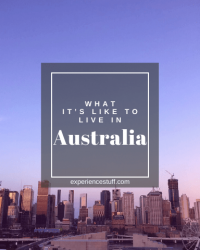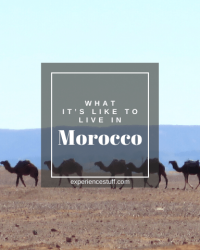Discover the truth about Málaga, Spain: Inside Tips from a Livability Expert
This post will show you what living in Málaga, Spain is like.
It covers:
- Housing
- Food
- People
- Things to do
- and more!
Let’s check out Málaga!

I disliked Spain for the first two months.
Most people first go in college or during a gap year. I went to Spain as a mostly grown man with a business I wanted to expand. A big mistake.
It’s definitely one of the more interesting places I’ve visited. It holds 47 UNESCO World Heritage Sites and counting, the third-highest in the world.
It took me a while to figure out that Spain isn’t the place to gain financial enrichment. And it’s the best once you realize that.

Yes, I did it all wrong when I first went.
Spain is where productivity goes to die, but I keep going back for some reason.
The key takeaway is, don’t try to work in Spain. It’s a place to maintain your livelihood, not to expand it.
Spain is great for affirming and enjoying your right to exist.
A sip of coffee in front of an elaborate cathedral or ornate mosque. A bite of churros con chocolate while watching families enjoy quality time.
The “in-between times” where nothing is seemingly happening and you can just be.
These were the things you learn to appreciate in Spain.
***Disclaimer***
This post is based on my experiences as an off-white westerner who has been living abroad since 2006. How you’re treated depends on who you are, how you behave and which street you’re on. Experiences may vary.
Brief History

Spain has seen it all. It’s been the hammer, the nail and everything in between.
There’s enough documented history of Spain to fill a library.
I’ll cover the vital info to help you better understand the country.
There’s evidence of humans living in Spain 1.2 million years ago.
Spain has been settled by numerous groups including Phoenicians (Levant region), Greeks, Carthaginians (Tunisia), Romans, Visigoths (central Europe) and Moors (Northern Africa).
It was the final destination of trade in the Mediterranean 30 centuries before Christianity, providing olives and precious metals like gold and silver (King Soloman’s ships were said to have visited every three years for trade).
From 218 BC to the 5th century, Spain was known as Hispania and was part of the Roman Empire. It was conquered partially as a launching point to invade North Africa and the rest of Europe.
Like most of the Roman Empire, Hispania was undone by Germanic tribes from the north, resulting in Visigothic rule lasting a few centuries. You can find many examples of Gothic art in Northern Spain.
From 711 to 1492 Spain was under Muslim Rule. Cordoba was the heart of Science and Art in the world at one point. There were long periods of religious tolerance, and Jewish artisans were brought in to help create intricate Islamic Art.

During the Islamic Period, there was a four-hundred-year long effort to reconquer Spain (they like to take things at their own pace) by Christian Kingdoms culminating with the marriage of Ferdinand II of Aragorn and Queen Isabella I of Castile. This formed the first Kingdom of Spain, which is what the country is called to this day.
As you might remember from elementary school. Queen Isabella commissioned the first voyages to the new world. She also gave non-Christians four months to convert or leave.
The Spanish Inquisition began soon after and didn’t formally end until 1834.
In the 1500s, Spanish explorers managed to conquer and destroy Aztec and Incan civilizations. Gold and precious metals flooded into Spain, bringing incredible wealth, but also inflation and corruption.
Their navy swelled into the Spanish Armada that ruled the seas, even crushing the Ottoman Empire’s ambitions to expand into the area until 1588, when the English fleet led by Sir Francis Drake defeated them.
Spain became the largest Empire on the planet under the Habsburg Dynasty controlling large areas of the new and old world.
This period is known as the “Golden Age”. It ended due to squandered riches and the rise of strong neighbors. The poor health of inbred monarchs was the final straw.
Napoleon invaded and made his older brother king (he was king of Naples and Sicily previously where he was popular, before being forced to rule Spain where he was incredibly unpopular) for a brief period (Spain let Napoleon’s army through to invade Portugal, but they double crossed and invaded them as well). This left the country in ruins and resulted in a new republic, civil war and fascism under Franco for almost 40 years.
It helps to think of Spain as not one country but 17, and at least two of them want out.
Living conditions in Spain
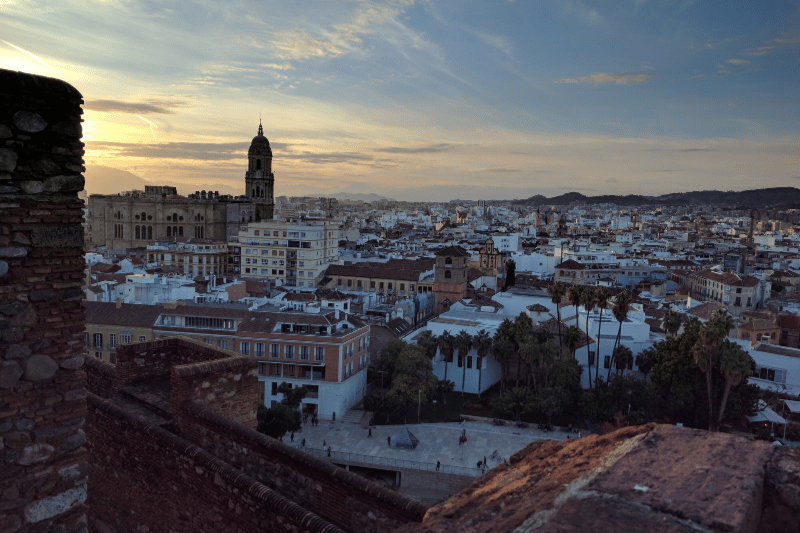
- Weather has traditionally been nice in Spain. The summers and winters are getting more extreme as evidenced by heavy snowfall in 2021 and increasingly hot summers. I spent a winter in Málaga and it was relatively mild.
- Internet is good enough. It’s not the fastest or most reliable, but it gets the job done.
- Transportation is well-connected all over the country. The bus and train system that links cities is above average. I traveled all over the place on weekends. You can also call taxis in most cities.
- Safety wasn’t much of an issue for me. There’s some poverty, but people have their basic needs met. You won’t see too many homeless people or roving bands of hooligans. I did get the occasional junkie asking me for money, but I don’t consider this dangerous.
- Water is safe to drink out of the tap, but taste, odor, microplastics and local pipe contaminants can be an issue. I mostly drank filtered or bottled water.
- Sanitation is not so great. There’s a lot of litter and people don’t always pick up after their dogs. There are large communal dumpsters in every neighborhood that tend to overflow. Air quality is pretty good all over though.
- Groceries are affordable and fantastic in Spain. You can fill your fridge for 20 euros with fresh vegetables and ingredients that would be considered gourmet in most countries. Jamón is cheap and delicious as well.
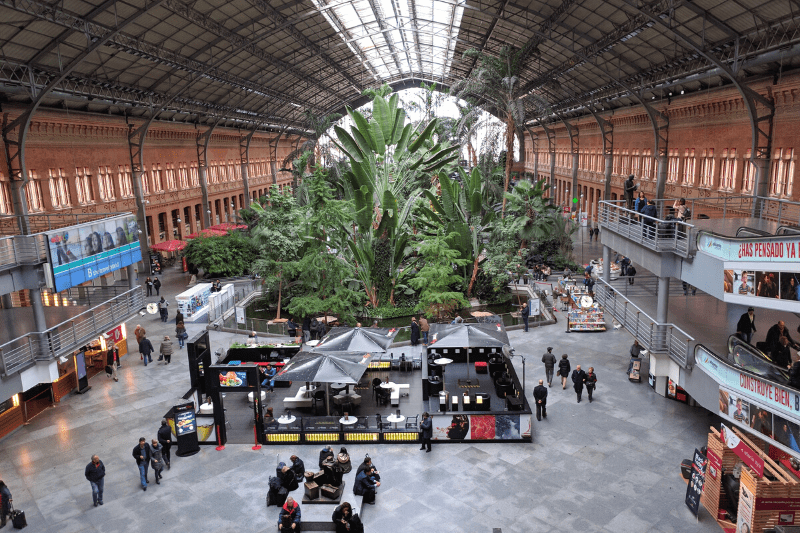
There are countless bars, restaurants and things to see and do. Leisure and culture can be found in abundance. Even going to the next city over is a unique and enriching experience.
I ended up taking trains all over the country to check out cities like Cordoba and Granada. Each one has a story that will amaze you.
There are modern gyms, even in the small town of Málaga where I stayed two months. Health and fitness are a priority in Spain, despite the massive quantities of wine, cheese and pork they consume.
There are coworking spaces if you need a proper office environment, but it took 30 minutes for me to sign up. I felt like I was applying for health insurance with the hoops I had to jump through. The young lady working there explained that it was to ensure businesses pay taxes.
Don’t expect things to get done quickly, and just go with it.
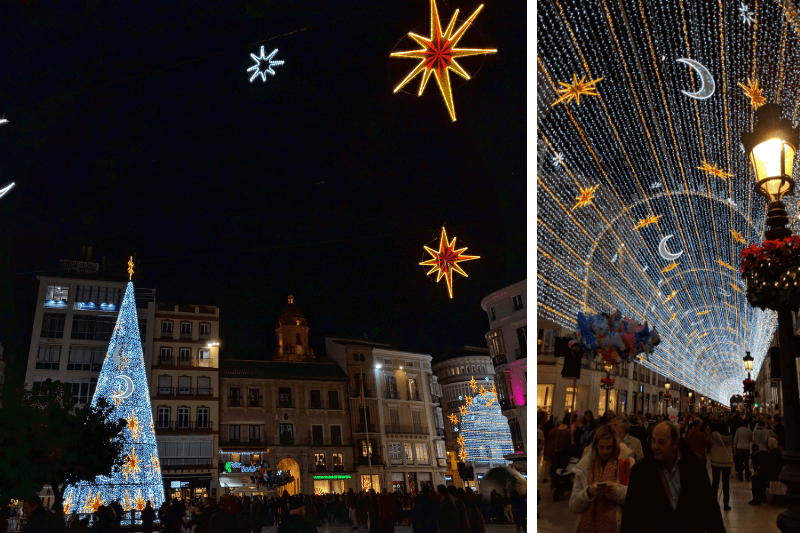
I’m a strong believer in autonomy. The only thing you can control is your behavior. But Spain taught me that there are caveats to this. You can try to swim upstream, but it’s often better to go with the flow or get out.
The universe tells you what to do, you only need to listen. And Spain said to relax and enjoy your life while you can.
I always keep this in mind when I get stressed about subpar results from work.
Spain forces you to reevaluate your priorities. I had what I like to call, a “third life crisis” there. My business was running well and I realized that I had enough money to do what I was passionate about. It seemed that I had beat the game and only side quests were left. It was a moment of existential dread, which was jarring because I had always lived to work until this point. I’m sure most Europeans learn this at a young age.
Tourism is massive in Spain and it’s the third or fourth most visited country, depending on the year. This is well-deserved since there’s so much to see, it’s overwhelming.
On the other hand, you learn how to spot a tourist restaurant quickly. They’re usually in the main square or in front of a breathtaking historic building. Those places are great for a quick coffee with a view. Then, it’s off to find a small, owner-run place in a neglected side-street for an inexpensive, authentic and mouthwatering meal.
I went to the Anthropology Museum in Madrid twice because the progression of human civilization was so well-presented, it made me reassess my values.
Exhibits are displayed in chronological order demonstrating how we started from small, egalitarian groups with similar possessions and graves. As these groups expanded, leaders were given larger burial mounds with more valuables (One could expand this principle to present day where billionaires control most of the wealth).
Looking at the golden crown of a long dead Iberian King who probably struggled to hold onto it made me realize how fleeting life is. There’s an infinite amount of time before and after we exist. The moments we get are all that matter.
I slowed down a lot in Spain and learned to appreciate these simple moments.
Housing

It was made clear to me that houses are mostly for sleeping in Spain. Housing encourages you to go out.
Most of the buildings are old and historic, which are great to look at, but not so comfortable to live in. Sound and weather insulation are afterthoughts, as are furniture.
No matter how broke you are in Spain, you go to a bar and can get one euro glasses of wine and tapas.
The housing prices ranged from $700 to $1,500 a month.
Food

Spanish food is a delightful mix of central European, Mediterranean and North African cuisines with New world ingredients. The region was Europe’s gateway to the New World after all.
Spain brought tomatoes, avocados, cacao and potatoes from the American continent. Europeans were unaware of these crops until the fifteenth century.
These ingredients are well-represented in Spanish cuisine.
It also incorporates elements from North Africa like apricots, almonds, sugar, saffron, rice and meatballs.
The Spanish can do cured pork a hundred different ways. You might notice pork legs hanging everywhere. Some say this came into fashion after the Inquisition when people were motivated to show they were Catholic.
I ordered Paella many times from a restaurant that delivered it in a giant metal pan I’m unsure if I had to return to this day.
Every region has a dish they’re proud of that’s usually delicious.
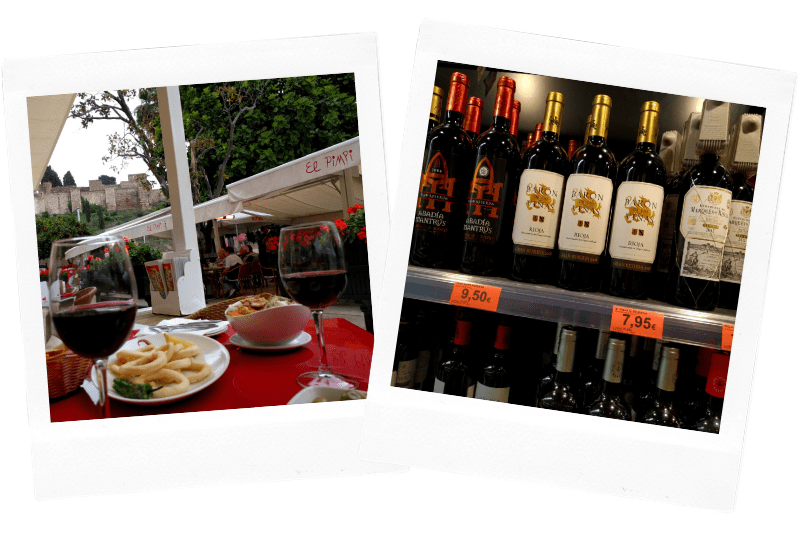
Wine comes in many grape varieties. It’s above average, but not my favorite. Locals don’t drink Sangria, they order Tinto de Verano instead because it’s cheaper.

Churros con Chocolate is a breakfast dish that’s more savory than sweet.
I especially enjoyed northern Pintxos from places like Asturias, which tended to be more flavorful.
Spanish food rarely disappointed. Just avoid tourist traps and you’ll do great.
People

Spanish culture is diverse and unique in each area. Every region has its own specialties and traditions.
Spaniards come from several different groups that have been united into one nation.
Catalonia and the Basque country have their own languages and seek independence. You get a different vibe from people of each region, the most drastic divergence being the north vs the south.
I’ve never met a better group of conversationalists in my life. Many are skilled even in English, which is often their second or third language. I was not in the mood to be chatty, since I wanted to get in shape after Bulgaria and scale my company.
This is pretty funny now.
The people have a pleasant way of disarming you. It made me forget all about my intention of building an online empire.
I could sit and watch Spanish people gesticulate and chat all day long, and never get bored. I wouldn’t say it’s always charming, but they have “it”.
Some fun memories are:
- Waiters offering to do tequila shots in mid-day and welcoming me to their city.
- Women complaining passionately about their coworkers with hands struggling to keep up when I rounded a corner, only to pause for a moment, size me up and then continue on as if I didn’t exist was always fun.
- A young couple consisting of the woman sitting on the man’s lap at a shared table in the middle of a trendy Mexican Restaurant in Barcelona, alternating between eating tacos and making out full on in broad daylight was uncomfortable but entertaining.
- Arguing long and passionately with gym staff because I’m red-wine hungover and don’t understand their rules.
- An old man who sounded like a toad serenading my window at 2am like he was the greatest opera star who ever lived. I wasn’t even mad.
There’s always a show in Spain.
You can find pretty much every ethnicity in Spain.
You can see large signs in many places welcoming middle eastern refugees.
There’s a large Chinese population in most cities. You can spot their liquor stores because they’re open on Sundays. Some operate Chinese restaurants, which were trendy for a while. That is until Japanese became all the rage and they pivoted to Japanese-themed restaurants that serve Chinese food.
Cost of living
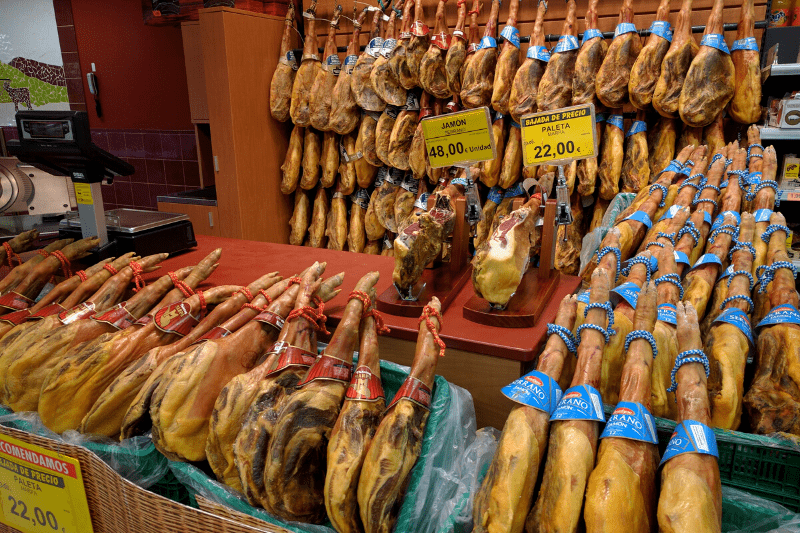
Cost of living in Spain is pretty affordable.
Housing varied by neighborhood, but you can have a decent standard of living on 1,500 USD a month. I was able to eat at nice restaurants and sightsee with this budget.
Budget
$1,000 USD to $1,500 USD a month depending on your housing quality and where you live.
Unique experiences
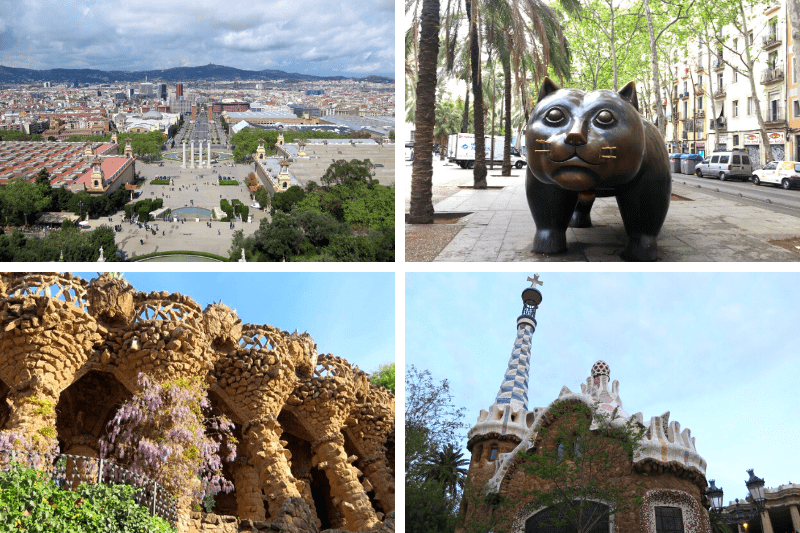
Sights
Giant pork legs on display, breathtaking historic buildings such as Roman bridges, gothic castles and geometric patterned mosques.
Sounds
Low to high din of constant chatter and lively music
Smells
Wine, rain, pork, coffee and chocolate and old-man cologne
Things to do
Enjoy traditional Spanish dances.
Eat at the oldest restaurant in the world at Restaurante Botin. Or just take a picture in front, because it’s not that great. There were probably periods when it was top-notch, but it seems to get by on its notoriety. There are far better restaurants if you know where to look.
Go to a random city without a plan and be amazed.
Eat a five-star meal with a view of Alhambra fortress in Granada.
Have an amazing local experience at a modern Gastro Pub at Gastronomica in Málaga.
Try some Spanish cheese, such as Manchego.
Gorge yourself on Jamón, Chorizo and Salchichón.
Enjoy one of the energetic music styles like Flamenco, which is not a dance, but a style of music that’s accompanied with dance at times.
Just sit down anywhere with foot traffic and enjoy life.
Rating
Difficulty: ★★★★★☆☆☆☆☆ (5/10)
A very forgiving place for tourists. But finding the best deals and experiences takes a bit of guile.
Live: ★★★★★★☆☆☆☆ (6/10)
Housing isn’t great, but the vibrant cultures and lively people make up for it.
Visit: ★★★★★★★★★☆ (9/10)
You can choose a city at random and will still have a memorable experience. Visit Spain no matter what you’re into.
Did we miss anything?
Spain is a great place to live or visit.
Let us know your Spain tips below!

